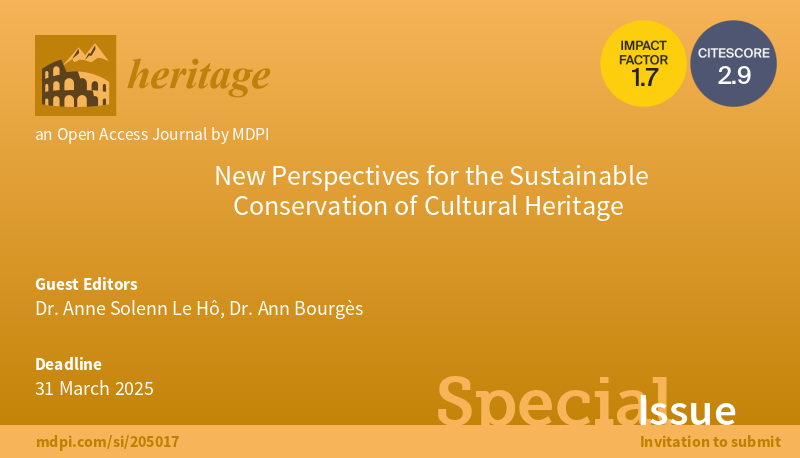
In recent decades, bio-technological applications and a large range of conservation materials with multiple properties in terms of stability, setting, strength, adhesion and coating have been developed. Simultaneously, recommendations regarding environmental conservation, the performance of buildings and preventive conservation standards have developed in the last 30 years. Research on management, exhibition, storage and transport has delivered results that are adapted to specific contexts (even recently, with the caring for heritage collections during the COVID-19 pandemic).
However, since the publication of the sixth assessment report in August 2021, the Intergovernmental Panel on Climate Change (IPCC) has painted a dire picture of the future, indicating that “recent climate changes are widespread, rapid and increasingly pronounced, and are unprecedented in thousands of years”. Climate change is exerting a growing and lasting impact on our environment and society, and cultural heritage is not being spared. With warmer, drier summers and hotter, wetter winters, in addition to the increasing frequency of extreme weather events and rising sea levels, tangible and intangible assets are exposed to new risks, and their vulnerability is enhanced significantly. How are these impacts reflected in problems regarding our heritage? How can heritage contribute positively to this new paradigm by inventing new methods of conservation? The ICOM-CC resolution, ICOMOS recommendation and UNESCO strategy on cultural heritage address these issues. They aim to guide and support management decisions regarding artefacts, structures and spaces. Methodologies and materials related to conversation that have a low impact on the environment and do not threaten health are in growing demand, in accordance with climate and environmental concerns, natural risks and subsequent tensions. This balance in terms of conservation efficiency, durability and the effect on the health of the public and environment is a major concern. Bio-sourced products, conservation protocols that employ recycled, recovered materials and waste reduction may become essential to conservation in a rapidly changing and increasingly global world. Moreover, an understanding of the impact of conservation practices and treatments on resources will enable the presentation of valuable insights into the maintenance of heritage over time.
All of these topics will be gathered in a Special Issue entitled ‘New Perspectives for the Sustainable Conservation of Cultural Heritage’, to be published in Heritage in 2025. For more information please visit the website of MDPI.
